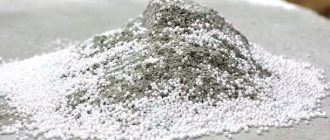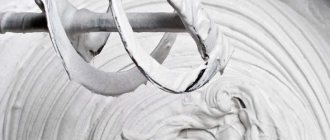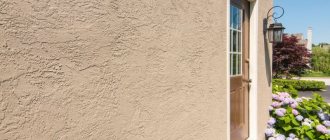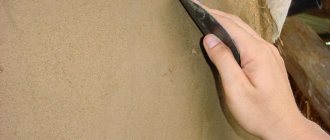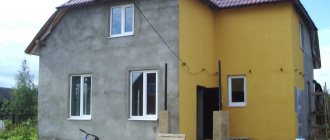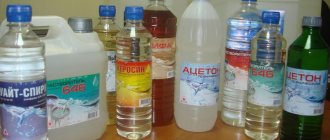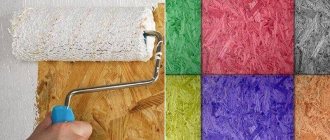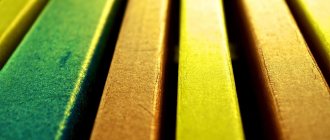Polymer plaster is a dry construction mixture that is used to eliminate defects and decorate the surface. It is applied in a thin layer to the prepared area. The main difference between a polymer composition and a simple one is that the former is used for finishing walls. After its application, the surface does not need to be painted.
Types of polymer plaster by area of application
Dispersions of epoxy resin, acrylic or polyurethane are used as a binder component in polymer mixtures. A water-based solution is considered universal. It can be used for interior and exterior work. Compositions with any other solvent are used exclusively for exterior finishing.
Polymer facade plaster is divided into several types depending on the purpose:
- acrylic solution is used for finishing polystyrene foam insulation;
- base - styrene-butadiene, styrene-acrylic or polyurethane based;
- walls - styrene-acrylic or acrylic binder;
- mineral wool coatings - siloxane.
Properties
All of the mixtures listed above are versatile
. In addition, they perfectly protect the surface from mechanical impacts. They serve as excellent protection for facades from moisture. They are not afraid of temperature changes. Helps improve heat and sound insulation. Varied in colors. Does not require the participation of application specialists. Allows easy cleaning of the façade. Sold at a reasonable price. Characterized by good adhesion to various materials.
Polymer decorative plaster is sold either dry or ready-made. In the first case, there are always recommendations for preparing formulations indicating the ratio of added components.
Reasons for the popularity of the material
The use of various chemical compounds helps improve the physical properties of the construction product and improve the quality of its adhesion to the surface.
Polymer plasters have many texture and color options, so they are well suited for finishing work. Used for processing concrete, plasterboard, cement-sand bases. They are often used for finishing basements and facades, as well as for interior decoration of walls of houses, administrative buildings, and public premises.
Experts highlight the following positive properties of the solution:
- frost resistance;
- elasticity;
- vapor permeability;
- water resistance;
- resistance to mechanical damage;
- durability (up to 20-25 years);
- rapid strength gain;
- solidity of the coating;
- environmental safety of the material.
The disadvantages include the following:
- high price (compared to simple mineral compositions);
- the surface requires preliminary preparation;
- the solution is sold only in finished form;
- Open packaging with the mixture is not stored.
Experts note that the advantages of the building material outweigh all its disadvantages.
Types of decorative surface
Different types of textures can be achieved using special tools.
The composition of polymer plaster can include various natural stones: granite, crushed marble or ordinary quartz sand. Various colors of the mixture. In accordance with this, a certain type of decorative coating is created:
- Homogeneous texture, reminiscent of rough goose bumps. It uses fine-grained plaster.
- Grainy texture. It contains granules of the same size, although larger material may be present.
- Relief texture. Allows you to achieve this effect using tools such as a brush, notched trowel, or embossed roller. As a result, the treated surface is obtained in the form of a pattern.
- Furrowed-rough texture. Mixing large and small granules allows you to achieve the result. Tools such as a spatula or trowel are used here. As a result, we have decorative grooves on the surface of the plaster, similar to grooves.
Classification
Depending on the purpose, the finishing solution is divided into special and decorative.
Depending on the type of solvent, the composition is:
- resin-soluble - epoxy or polyurethane (used only for outdoor use);
- water-soluble - PV-acetate, styrene-acrylic and butadiene-styrene (universal).
Depending on the base, plaster can be:
- siloxane;
- acrylic;
- polymer cement;
- silicone.
Polymer decorative plaster
The decorativeness of the finishing layer depends on a number of factors:
- composition and color scheme of the mixture;
- filler texture (shape and size of granules);
- method of applying the solution.
The following can be used as a filler for decorative polymer plaster:
- all types of sand (river, simple, mountain or quartz);
- fragments of stones or shells (for mosaic mixture);
- artificial granules (vermiculite or expanded clay);
- stone or metal dust;
- mica;
- flocks;
- synthetic fibers.
The properties of the final solution depend on the granule fraction. Depending on their size, the plaster can be fine-grained (for example, Venetian) or coarse-grained (filler diameter can reach 5 mm).
The polymer mixture is plastic, easily applied to the surface and quickly gains strength.
Acrylic
Acrylic-based building material is universal and is used for external and internal work.
It has a number of positive properties:
- The strength and ductility of the mortar helps protect walls from the effects of impacts.
- Resistance to moisture, UV rays, frost and temperature changes ensures the durability of the finish regardless of the weather conditions in the region.
- The vapor permeability of the plaster promotes good air circulation inside the room.
- Acrylic compounds provide additional sound insulation and retain heat.
- Carrying out the work does not require any special skills.
- Large selection of textures and colors of materials.
- Dirt on the finish is easily washed off with water.
- Good price-quality ratio.
Silicone
Silicone mixture is more often used for outdoor work. It is considered to be of higher quality and more durable. Walls covered with such a solution are completely protected from moisture, sunlight, frost and cracks. Thanks to this, the surface retains its original appearance for many years.
The composition of the building mixture includes:
- additives that provide resistance to weather conditions;
- silicone resins guaranteeing durability;
- synthetic fibers and organic fillers responsible for the decorative component;
- pigment that forms the color spectrum.
Dust and other contaminants are retained on the surface and do not penetrate into the finish. This makes it easy to get rid of them with plain water without the use of additional products. Additionally, the composition is enriched with components that protect coatings from mold and fungi. Thanks to this, silicone plaster can be used for finishing facades in regions with a humid climate.
The cost of this material will be slightly higher than that of other polymer compounds. However, it is fully justified by its physical properties and decorative characteristics.
Silicate
This type of plaster is based on liquid glass. It is used for exterior decoration of buildings. The finished solution hardens quickly, and application requires special skills. Therefore, it is recommended to entrust the work to experienced craftsmen.
The positive properties of the material include:
- heat and sound insulation;
- resistance to adverse climatic conditions and aggressive influence of the urban environment;
- average period of operation - 20-25 years;
- the finish does not allow moisture to pass through, but releases steam;
- goes well with shell rock and coarse concrete surfaces;
- can be applied to mineral wool and expanded polystyrene insulation;
- Dirt and dust are washed off with water without additional products.
Despite the advantages, the mixture also has disadvantages:
- when finishing walls, primer and paint are additionally used;
- low elasticity of the coating;
- the pigment fades quickly in sunlight.
Siloxane
Despite the similarity of names, silicone and siloxane are not the same thing. The first is an independent polymer material, and the second is a separate functional group. These solutions contain more acrylic. The main task of siloxane is to form a waterproof film during the drying of the finishing layer. Silicone coating does not allow moisture to pass through the entire thickness of the coating, while silicone coating does not allow moisture to pass through only along the border.
When exposed to sunlight, the protective film loses its properties and is completely destroyed after 5-6 years. After this, the coating becomes vulnerable to weather and climatic conditions and quickly deteriorates. Therefore, the main disadvantage of such material is its fragility.
Polymer-cement composition
Polymer cement plaster belongs to a number of complex and multicomponent building mixtures. The addition of polymer fibers to the composition made it possible to increase the strength, elasticity of the coating, resistance to mechanical and vibration influences, and adhesion to other materials.
The elasticity of the solution is almost 10 times lower than that of cement. Polymers simplify the application of the mixture, but increase shrinkage when strength is gained. In this case, cracks do not appear. The layer turns out to be thin, so cement-polymer plaster is used to eliminate chips, cracks, design joints and carry out restoration work.
You won't be able to make the material yourself. The mixture is sold dry. The rules for preparing the solution and consumption are indicated on the packaging.
Failure to comply with the recommended proportions may negatively affect the performance characteristics of the coating. The plaster is diluted immediately before application, since it is not stored in finished form.
Varieties
All types of such polymer solutions are based on resins of artificial origin and synthetic components. Their type determines the properties of the mixture, and depending on what substances are used as the base, polymer plaster can be of one type or another.
Acrylic
The main component of the material is synthetic resins, which, when hardened, contribute to the formation of a hard protective coating. Its advantages include:
- low vapor, gas and water resistance;
- protection of the treated surface from mechanical damage;
- affordable price;
- immunity to temperature changes and exposure to sunlight;
- possibility of easy cleaning from contaminants;
- increased sound insulation properties;
- Possibility to choose from a wide range of colors and textures.
Such polymer plaster is equally practical for interior work and for finishing facades.
Silicone
It is made on the basis of silicone resin and is the most durable type of polymer plaster. Due to its high resistance to temperature changes, frost and heat, the composition is popular in regions with a wide range of climatic conditions.
The cost of this type of plaster is higher compared to other types. This is explained by the content of a large number of additional components (minerals, reinforcing polymer fibers, protective additives).
Silicate
The product contains liquid potassium glass. Thanks to this feature, it is optimally suited for finishing lime surfaces and mineral insulation, exhibiting increased adhesive properties. It is recommended to use this composition for facades and interior walls after installing mineral insulation.
A serious disadvantage of such a solution is the instability of the completed surface to constant exposure to moisture, therefore, in rainy regions where there is constant high humidity, the use of such plaster will be impractical.
Siloxane
This plaster based on silicone resins does not require preliminary preparation of the composition and is sold in the form of a ready-made solution. Its advantages are:
- low cost;
- high adhesive properties;
- quick drying after application to the surface;
- possibility of use for processing mineral bases;
- the ability to use different colors to give the finishing layer the desired color.
Polymer plaster is one of the few compositions that can be used to cover dispersive (non-uniform) surfaces. Before such work, these surfaces must be coated with a silicone primer for better adhesion.
Another advantage of such a solution is the ability of the finished layer to self-clean. This is expressed in the fact that the composition repels settling dust and small particles of dirt, but prolonged contact with such particles will still lead to contamination, therefore, if such plaster is used to decorate external walls, they must be washed from time to time.
Main characteristics
Polymer plaster for facades and interior walls has the following advantages:
- vapor permeability and moisture resistance provide protection from water, but do not interfere with the natural ventilation of the room;
- resistance to frost, sudden temperature changes and other weather conditions;
- long service life;
- high adhesion to other materials;
- Impact protection.
The finishing material is sold in the form of a dry mixture and a ready-made solution. Methods for preparing and using plaster are indicated by the manufacturer on the packaging. It is not recommended to deviate from the instructions. Violations of technology reduce the durability of the coating.
Where can I buy?
This material is sold in any hardware store and specialized markets. You can also order it online after consulting a specialist. The price varies depending on the type, manufacturer and volume of the solution purchased.
Any packaging of polymer materials indicates the consumption per 1 square meter.
m. Therefore, you can independently calculate how much plaster is needed to finish any base. To do this you need to know its area. You should also purchase an appropriate primer from the seller, which is an important component when applying a decorative coating. data-matched-content-ui-type=”image_stacked” data-matched-content-rows-num=”2″ data-matched-content-columns-num=”3″ data-ad-format=”autorelaxed”>
Technology of applying polymer plaster
Plastering work is carried out at a temperature of +5…+30°C. The walls must be protected from wind, precipitation and direct ultraviolet rays. Optimal air humidity is no higher than 75%. The application technology depends on the decorative features of the selected material. Before starting work, the surface is primed and leveled. After this, a uniform base coat is applied using a trowel. Its thickness depends on the size of the filler. The larger the fraction, the thicker the coating will be.
When the base dries a little, apply a second layer with a spatula and create the desired decorative effect. Finishing, such as varnishing, is carried out only if required by the technology. In most cases it is not needed.
How to prepare the solution
Before application, the finished composition only needs to be mixed. In most cases, you cannot add water to it, because... it will destroy the polymer bonds, and the material will last less than the manufacturer claims. But if the mixture is too thick and difficult to apply, you can dilute it with liquid (no more than 10% of the total volume of the solution).
If you purchased the plaster in dry form, then it must be diluted in accordance with the instructions. Violation of proportions can negatively affect the quality of the coating. The dry powder is mixed with liquid until a homogeneous mass is obtained and left for 15-20 minutes to form a crystalline network. Then the composition should be mixed again.
How to prepare the surface
Polymer plaster for interior work is applied exclusively to the prepared wall. Before finishing begins, the previous coating (wallpaper, varnish, paint, etc.) is removed from the surface, the brick seams are unstitched, and a mesh of reinforcement is attached to the wooden panels. Chips and cracks are covered with cement mortar.
Grease stains, fungus, mold and rust are treated with special products, and dust is removed. After this, the wall is primed and left to dry completely for 24 hours.
Applying plaster yourself
Decorative plaster is applied with a spatula. Its width is selected depending on the area being processed. Experts recommend choosing tools that are comfortable to hold in your hand and do the job with them. The solution is applied in a thin layer. Most often, the fraction of components does not exceed 4-5 mm. The thinner the layer, the less risk that the coating will begin to peel off over time.
Caring for fresh coating
In order for the material to last for the number of years stated by the manufacturer, it is necessary to strictly adhere to the technology for applying façade polymer plaster. Fresh finishes must be protected from direct sunlight and drafts. These factors will contribute to drying too quickly and, as a result, severe shrinkage. This can cause cracks and chips. If the layer dries unevenly, the color of the coating will be uneven, with streaks and spots.
After facade finishing work, you need to ensure that no moisture gets on the surface during the first 24 hours after application. Rain can wash away the plaster layer, which will shorten its service life. To protect the coating from adverse climatic influences, it is recommended to take preventive measures, for example, covering the walls enclosing scaffolding with film or other special material.
It is important to remember that with high humidity, it will take longer for the composition to harden. This must be taken into account when planning further finishing work.
Pros and cons of polymer plaster for facades
The popularity is due to the provision of good grip. This material is used to improve soundproofing and thermal insulation. It is applied using available tools and means, and no special knowledge is required when working. Affordable. Other benefits:
- They do not allow atmospheric moisture to pass through.
- Release steam from the interior.
- Not afraid of mechanical influences.
- Strong adhesion to any materials.
- The unpainted composition is tinted directly in the container or painted over after drying.
- Apply in the usual way.
There are also disadvantages:
- It is impossible to level out large imperfections and differences. Thin layer up to 3 mm. Therefore, first the base is thoroughly leveled.
- Mixtures are not prepared at the work site.
- After opening, it must be used immediately, without taking breaks, because it will harden forever.
- The price is slightly higher than regular cement and sand.
Manufacturers
On the building materials market you can find polymer decorative plaster for external and internal work from domestic and foreign manufacturers. Russian-made solutions will be cheaper than their European counterparts. But in order not to make a mistake with quality, it is recommended to give preference to branded products.
Among the Russian companies, the following companies are distinguished, whose products are not inferior in quality to their foreign analogues:
- "Osnovit";
- "Terracotta";
- Perel.
Among European manufacturers, experts prefer the following brands:
- Knauf;
- Decorazza;
- Bergauf;
- Seresit.
Often, after opening branches, foreign companies organize subsidiaries that produce similar products under a different brand. The cost of such plaster will be cheaper without losing quality.
Preparation of plaster mortar
It is important to observe the parameters and prepare a solution of the required consistency.
As with surface preparation, this stage of working with polymer plaster has its own difficulties and features. The main thing here is to follow all the steps for preparing the decorative mixture.
For mixing, it is recommended to use an electric drill with a mixer. After thoroughly mixing until smooth, be sure to leave the mixture for 15 minutes.
During this time, the solution will reach the desired consistency, giving polymers and other chemical additives the opportunity to dissolve. Then repeat the mixing and the plaster can be used.
The solution must be prepared in small portions to prevent it from drying out. If it starts to dry out, the job will be difficult.
In this case, water should not be added under any circumstances. Otherwise, this may lead to a violation of the consistency of the mixture and result in unexpected defects on the finished surface.
Natural decorative plaster
designer Shlenkina Sonya
Which plaster to choose for a dark room?
Plaster with an active texture will absorb light.
Therefore, do not overload the entire room with it. One wall is enough, and the rest can be decorated with the same technique, but use plaster with a different texture, a different shade, or choose companion wallpaper. Decorative plaster with a pearlescent or glossy effect will give more light, as it will reflect even a small amount of light. Read more
Which plaster to choose for a dark room?
Plaster with an active texture will absorb light.
Therefore, do not overload the entire room with it. One wall is enough, and the rest can be decorated with the same technique, but use plaster with a different texture, a different shade, or choose companion wallpaper. Decorative plaster with a pearlescent or glossy effect will give more light, as it will reflect even a small amount of light. Hide
From lime to wax. Natural wall coverings are made from cement or slaked lime.
The most striking example is traditional Venetian plaster. This facing material contains only natural ingredients (stone flour, colored pigments, water), and even the finishing of the wall is made from beeswax.
It is clear that the downside of natural origin is the very high price of the material itself and the cost of work on its application.
